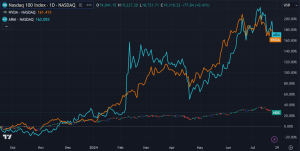Share this page:
A pensions storm is brewing with the government’s recent suspension of the triple lock guarantee for State Pension rises. The State Pension will rise by 3.1% in April, at which point the Bank of England forecasts inflation will hit 7.25%. As a result, pensioners face a loss of over 4% in the ‘real value’ of their income.
Self-invested personal pensions (SIPPs) were first launched in 1990. But there’s been a surprisingly low uptake. The government reports that 13 million people in the UK invest in ISAs, compared to only 800,000 investing in SIPPs, according to Intelligent Partnerships.
So, why have I invested in a SIPP to supplement my State Pension?
1. The government boosts my contributions by 25% or more
The main advantage of a SIPP is that my contribution is immediately increased by 25% or more. Invest £8,000 in a SIPP, and the government tops it up to £10,000. Unlike an ISA, you can ‘carry forward’ unused contributions from the previous three tax years.
Higher-rate taxpayers can claim a further £2,000. And additional-rate taxpayers could increase their £8,000 contribution to £12,500.
Even non-taxpayers (aged under 75) and children can pay up to £3,600 (gross) into a SIPP each year. However, there are a few exceptions, particularly for high earners.
2. I have control over my investments
I decide where to invest my money, with the choice of 2,500 shares, bonds, investment trusts and exchange-traded funds, or I can even hold it as cash. I transferred two employer pension plans into my SIPP so I can manage my pension in one place.
With some years before retirement, I’ve focused my SIPP on capital growth, rather than income. If there’s a market downturn, my investments have time to recover.
I currently have over 80% of my SIPP invested in funds, 15% in investment trusts and the remainder in UK stocks and cash. Around 75% of my portfolio is split equally across global, UK and emerging markets funds.
3. It gives me flexibility in retirement
I like the flexibility of a SIPP in retirement (minimum age of 57 from 2028). I can receive 25% of my pot as a tax-free cash lump sum, either as one amount or split over time.
What about providing an income? As with other pensions, I could buy an annuity with some (or all) of my SIPP. Annuities pay a guaranteed income for life and can pay an income to your partner if you die.
However, I’m more attracted by the flexibility of drawdown. This leaves my pension invested (and, hopefully, growing) and I can withdraw money when needed. I can also invest in income-paying investments to provide a regular income stream.
4. I can shield assets from Inheritance Tax
There’s currently a five-year freeze on the Inheritance Tax threshold. At the same time, rising house prices have pushed more estates above the nil-rate bands. With inheritance tax at 40%, this could mean a substantial tax bill.
When I die, my SIPP pot should be passed on to my partner or children free of Inheritance Tax. If I die before 75, they can generally make withdrawals without paying tax. If I’m older than 75, any withdrawals will be taxed as their income.
I’m planning to draw down my SIPP rather than spending it all on an annuity. This allows any unused pension pot to be inherited by my family.
5. Low fees maximise the value of my pension pot
A survey by Profile Pensions revealed that most people don’t realise they’re paying pension charges. Even worse, 55% have ‘expensive’ pensions with an annual charge of over 1%. As a rule of thumb, they advise you not to pay more than 0.34% in pension fees.
Why do fees make so much difference? Because most pensions are invested for many years.
Here’s an example. You make a one-off payment of £50,000 into a SIPP at an annual growth rate of 8% for 25 years. Your pension would be worth £266,000 based on a 1.0% fee. But it would be worth £314,000 with a 0.34% fee. The difference in fees has reduced the value of your pension pot by nearly £50,000.
What else should I consider?
Although there are substantial benefits to investing in a SIPP to supplement my State Pension, I can’t access my pension pot until I’m 57. This might prove an issue if I want money for a house deposit, for example.
So, I’ve also invested in a stocks and shares ISA with Hargreaves Lansdown, one of our top-rated ISA providers. It allows me to invest in the same choice of funds, shares and other investments. And it’s a good way of making sure my money is also growing in real terms, given the current state of inflation.
It’s important to remember that pensions and tax rules are complex, and it may be wise to seek independent advice before making any pension decisions.
Was this article helpful?
YesNo
About the author
Jo is a writer specialising in personal finance and investments. She is a qualified Chartered Accountant, previously working in M&A at a UK investment bank and Arthur Andersen. Jo has written on a range of subjects, from in… Read More
Share this page:
Some offers on The Motley Fool UK site are from our partners — it’s how we make money and keep this site going. But does that impact our ratings? Nope. Our commitment is to you. If a product isn’t any good, our rating will reflect that, or we won’t list it at all. Also, while we aim to feature the best products available, we do not review every product on the market. Learn more here. The statements above are The Motley Fool’s alone and have not been provided or endorsed by bank advertisers. John Mackey, CEO of Whole Foods Market, an Amazon subsidiary, is a member of The Motley Fool’s board of directors. The Motley Fool UK has recommended Barclays, Hargreaves Lansdown, HSBC Holdings, Lloyds Banking Group, Mastercard, and Tesco.
This post was originally published on Motley Fool







